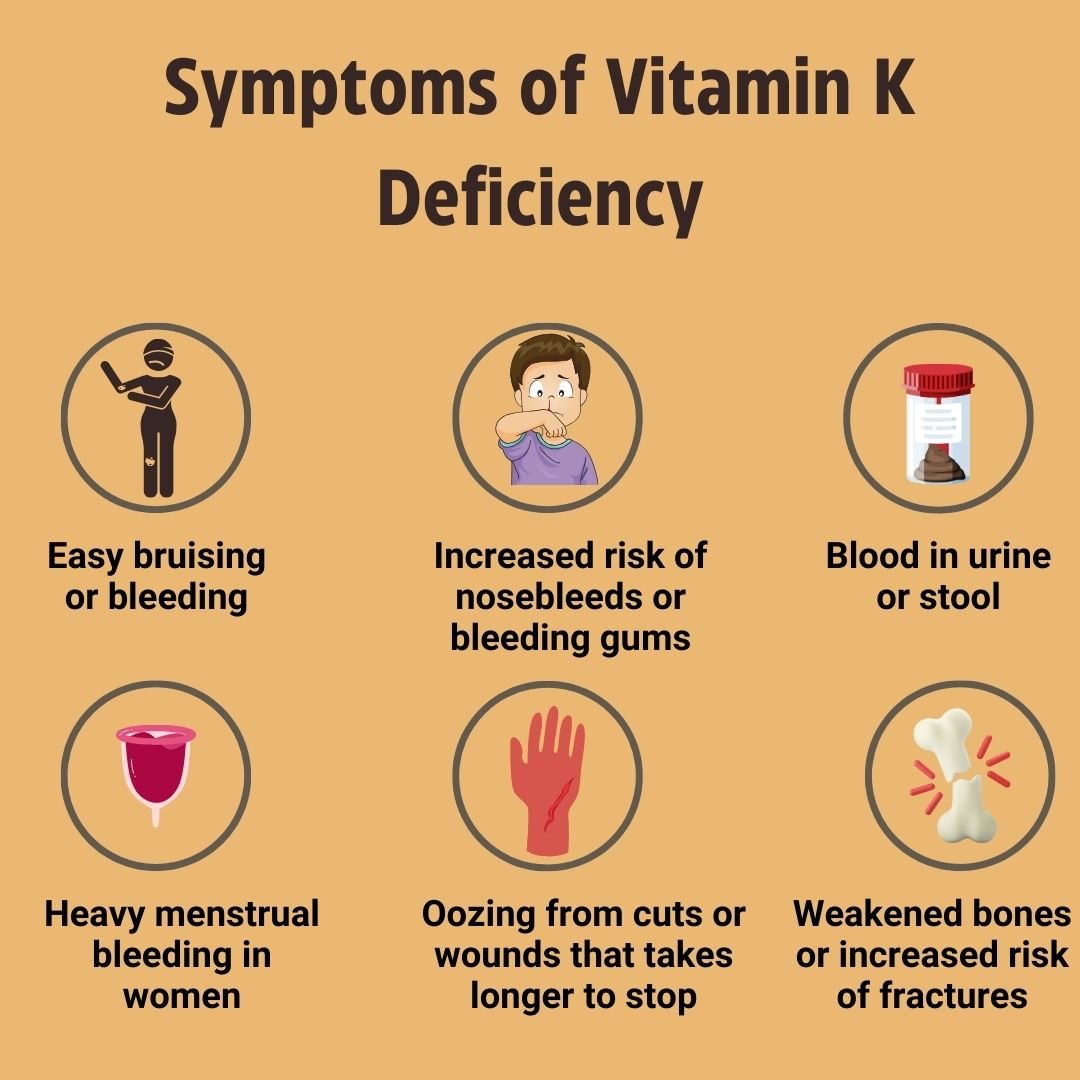
Vitamin K Deficiency: An Overlooked Nutrient with Significant Health Implications

Vitamin K is an essential nutrient that plays a critical role in maintaining overall health, yet it is often overlooked in medical examinations and the discussions about diet and nutrition. While vitamins like C, D, and B12 often receive more attention, Vitamin K is equally important for various bodily functions, particularly in blood clotting and bone health. However, its deficiency, although not as commonly discussed, can lead to severe medical issues. This article delves into why Vitamin K deficiency is often overlooked, its potential health consequences, the prevalence of deficiency, foods rich in Vitamin K, and strategies to prevent this deficiency.
Why Vitamin K Deficiency is Often Overlooked
One of the primary reasons Vitamin K deficiency is overlooked is due to the general lack of awareness about its importance compared to other vitamins. Many people are familiar with the health benefits of vitamins such as A, C, D, and E, largely because they are marketed more heavily and are associated with more immediately noticeable health effects. Vitamin K, however, is less discussed because its effects are not as overt unless a significant deficiency occurs.
Another factor contributing to the oversight of Vitamin K is its presence in sufficient quantities in a typical balanced diet. Unlike Vitamin D, which many people lack due to insufficient sunlight exposure, Vitamin K can often be obtained through dietary sources. As a result, it’s assumed that deficiency is rare, leading to less emphasis on its importance. However, this assumption can be misleading, especially in individuals with specific health conditions or dietary restrictions that may affect their Vitamin K levels.
Medical Issues Related to Vitamin K Deficiency
Vitamin K deficiency can lead to a range of health problems, the most well-known of which is impaired blood clotting. Vitamin K is crucial for the synthesis of proteins required for blood coagulation. Without adequate Vitamin K, the body cannot produce these proteins effectively, leading to an increased risk of excessive bleeding even from minor injuries.
Beyond blood clotting, Vitamin K is essential for bone health. It facilitates the carboxylation of osteocalcin, a protein that helps bind calcium to bones, making them stronger and less susceptible to fractures. A deficiency in Vitamin K can therefore contribute to osteoporosis and increase the risk of fractures, particularly in older adults.
Recent studies have also suggested a link between low Vitamin K levels and cardiovascular diseases. Vitamin K is involved in the regulation of calcification in blood vessels, which can lead to arterial stiffness and increase the risk of heart disease when not properly managed.
How Common Is Vitamin K Deficiency
According to an article in the National Library of Medicine from September 8th, 2023 is Vitamin K deficiency commonly observed in 8% to 31% of typically healthy adults. Nevertheless, certain populations are at higher risk. Newborns, for example, are particularly vulnerable to Vitamin K deficiency due to their limited stores of the vitamin at birth and the low levels of Vitamin K in breast milk. This is why Vitamin K injections are commonly administered to newborns to prevent hemorrhagic disease. Adults with gastrointestinal disorders, such as Crohn's disease or celiac disease, are also at risk because these conditions can interfere with the absorption of fat-soluble vitamins like Vitamin K. Additionally, people who have been using antibiotics may experience deficiency because antibiotics can disrupt the gut bacteria that produce Vitamin K2.
Foods Rich in Vitamin K
To prevent Vitamin K deficiency, it’s essential to include foods rich in this nutrient in your diet. Vitamin K comes in two forms: Vitamin K1 (phylloquinone) and Vitamin K2 (menaquinone). Vitamin K1 is primarily found in plant-based foods, while Vitamin K2 is present in animal products and fermented foods.
- Leafy Greens: The most abundant sources of Vitamin K1 include kale, spinach, collard greens, and Swiss chard. Just one cup of raw kale, for instance, provides more than 500% of the recommended daily intake (RDI) of Vitamin K.
- Cruciferous Vegetables: Vegetables like broccoli, Brussels sprouts, and cabbage are also rich in Vitamin K1.
- Fermented Foods: Natto, a traditional Japanese dish made from fermented soybeans, is an excellent source of Vitamin K2. Other fermented foods like sauerkraut and certain cheeses also provide Vitamin K2, though in smaller amounts.
- Animal Products: Vitamin K2 can also be found in animal liver, egg yolks, and dairy products, particularly those from grass-fed animals.
Preventing Vitamin K Deficiency
Preventing Vitamin K deficiency largely involves maintaining a diet that includes sufficient amounts of Vitamin K-rich foods. For most people, this means consuming a variety of vegetables, particularly leafy greens, and incorporating fermented foods into the diet.
For individuals at higher risk of deficiency, such as those with certain medical conditions or those on medications that interfere with Vitamin K absorption, it may be necessary to monitor Vitamin K levels more closely. In some cases, supplementation may be recommended under medical supervision.
Furthermore, for newborns, the administration of Vitamin K injections at birth is a crucial preventive measure to avoid Vitamin K deficiency bleeding (VKDB), a potentially life-threatening condition.
Conclusion
Although often overlooked, Vitamin K is a vital nutrient with significant health implications. It can lead to severe health issues such as excessive bleeding, osteoporosis, and cardiovascular diseases. By raising awareness of the importance of Vitamin K, promoting the consumption of Vitamin K-rich foods, and ensuring at-risk populations are properly monitored, we can prevent the adverse effects associated with this often-neglected nutrient.
content source:
national library of medicine
